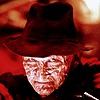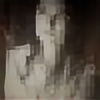HOME | DD
 melvynyeo — Doryctinae laying eggs
melvynyeo — Doryctinae laying eggs

#eggs #laying #doryctinae
Published: 2020-07-28 01:06:54 +0000 UTC; Views: 1778; Favourites: 105; Downloads: 0
Redirect to original
Description
Taken at night in Singapore forest.
The large majority of Doryctinae are idobiont ectoparasitoids of the larvae of wood-boring beetles, such as Buprestidae. As for how the parasitic Spathius Nees, 1818 species find and prey upon the emerald ash borer, Jian J. Duan (1) explained that when Buprestid larvae feeds under the bark, the parasitoid locates the larvae first by smelling the tree (which gives off a different scent when infested) and then by walking on the trunk and using sensors in their legs to detect the vibrations of the larvae feeding. Once a wasp feels larval vibrations it uses its ovipositor which is normally 3-5 millimeters long to drill through the bark and lay eggs on the surface of the Buprestid larvae. Once the parasitic Spathius larvae hatch, they begin to feed on and suck the juices out of the Buprestid larvae.
Related content
Comments: 10

👍: 0 ⏩: 0

👍: 0 ⏩: 0

👍: 0 ⏩: 0

👍: 0 ⏩: 0

👍: 0 ⏩: 0

👍: 0 ⏩: 0

👍: 0 ⏩: 0

👍: 0 ⏩: 0

👍: 0 ⏩: 0

👍: 0 ⏩: 0

















